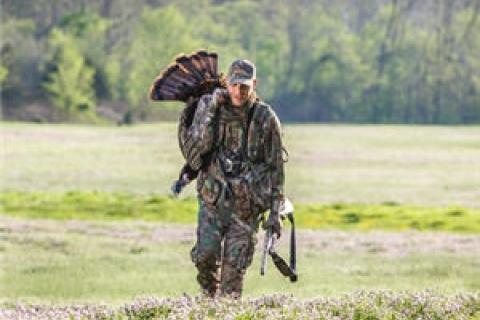
Whether you hunt deer, bear, pronghorns, turkeys, elk, quail, ducks or squirrels, the following eight hunting tips will up your chances of success.
 |
| Whether you're a veteran hunter or a newbie, these tips can help you see more success this hunting season. |
Deer
When still hunting deer, good areas to cover include old home sites, clearcuts, the border of brushy habitat and mature timber, field edges, thick river bottoms, and unused logging roads. Bottlenecks, such as a small patch of woods between two fields or a mountain saddle, are also good bets. Move slowly and pause often to scan the cover for patches of your quarry.
Bears
A predator call is the standard choice for luring in bears, but don’t overlook a deer fawn call. Sometimes this works even better for drawing in a hungry bear. You can even use a fawn decoy for a super-realistic approach.
Position yourself where you can make a quick snap-shot if the bear comes in fast. Some bruins literally charge in to the sound of a fawn in distress.
Pronghorn
Ridges and hills that can’t be reached with vehicles are prime spots for finding a trophy antelope. The biggest bucks use these areas regularly for daytime bedding spots and head to them in even greater numbers once the seasons open and pressure builds in more accessible areas.
Squirrels
Always pick a day with little or no wind when hunting squirrels if possible. Strong breezes keep bushytails hiding for the most part. If they do scamper out, they’re extra wary, and it’s harder for you to hear and see them rustling through the leaves and scurrying across branches.
Ducks
Decide whether ducks are worth trying to call in by how they are flying. Birds that are high up, flying fast and in a straight line know where they are going and aren’t likely to come to your duck calls. Lower birds, however, that look more wavering or indecisive in their flight can often be lured in with a good spread and skillful calling.
Turkeys
If you break up a flock of turkeys in fall and find you forgot your turkey calls, try whistling at a high pitch three to five times, like you were calling a dog. Young birds are particularly susceptible to this “kee-kee” call, which they make to regroup with each other when separated.
Elk
When it comes to late season elk hunting, forget the big, well-known meadows shown on topo maps. These have been pounded hard by other elk hunters since opening day. Instead, search for tiny open pockets with a bit of grass or forbs left on high, hard-to-reach ridges or tucked away in an otherwise thick patch of dense, black timber.
Quail
Instead of hunting edges of fields for quail, search further back into the forests and thickets surrounding them. Today’s bobwhites might be hundreds of yards away from fields in dense cover instead of right on the edge of the cultivated areas. It’s the hunter who pushes back into this thick brush who is most likely to score on modern quail.
For more fall hunting tips visit Bass Pro Shops 1Source hunting.
- 4360 views

